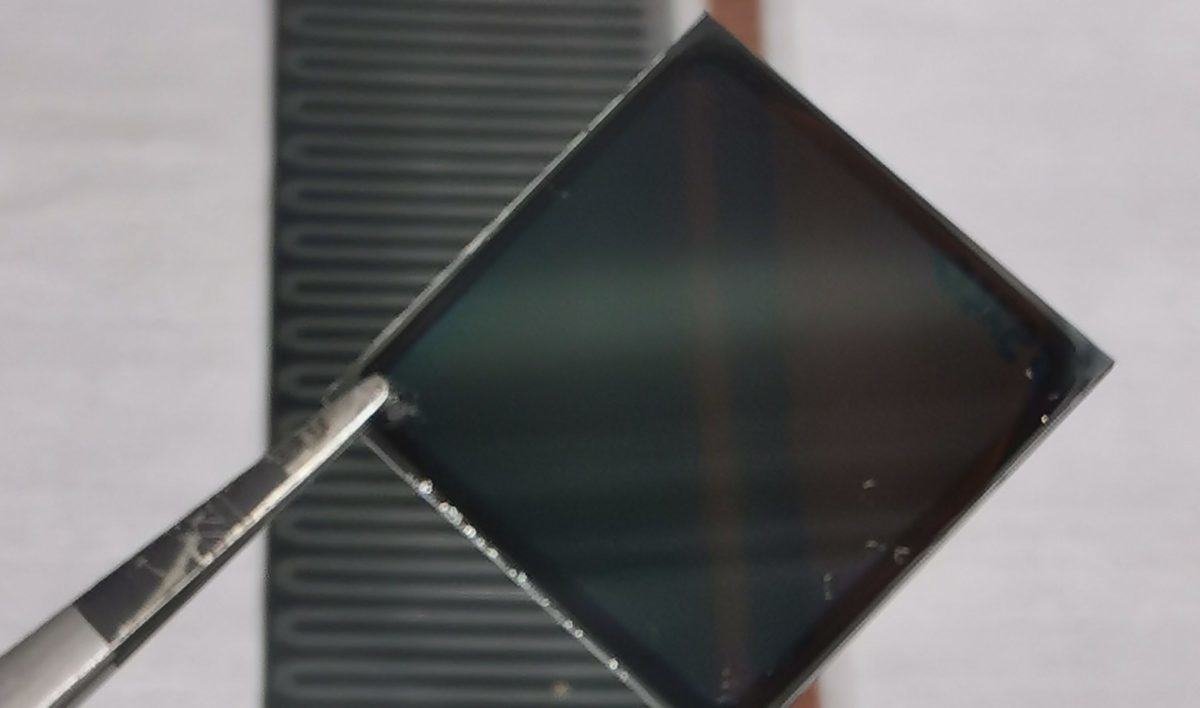From pv magazine global
A team of international researchers led by Belgian institute imec claims to have achieved 25% efficiency with a flexible thin-film building-integrated PV (BIPV) solar cell.
“With these thin-film solar cells, we are truly competitive with the traditional solar panel sector for the first time,” said Bart Vermang, a researcher with imec, fellow research institute VITO and Belgium’s Hasselt University.
The EU-funded Percistand consortium which made the breakthrough includes organizations from the Netherlands, Germany, Switzerland, France, China, Australia and the U.S.
The researchers used two materials laid on top of each other in the record-breaking device. “In recent weeks, we’ve combined the best bottom and top cells, which is how we have already achieved this high efficiency level of 25%” the group stated, without providing details of the cell technology.
The researchers said only that the cell has a 1cm² surface and was based on a thin wafer. It is not clear if the results have been certified by an independent third party.
The next ambition
With a stated aim of reaching 30% efficiency – “we’ll definitely get there,” said Vermang – the group admitted it is still seeking a cost-efficient method of combining the two cell layers.
The claimed conversion efficiency improves on the 24.6% the researchers announced in September 2018 for a perovskite-based tandem CIGS solar cell, the imec press office told pv magazine. That 0.5cm² device consisted of a perovskite cell combined with a CIGS device developed by Germany’s Center for Solar Energy and Hydrogen Research (ZSW), which is also a Percistand partner.
In September, the ZSW and fellow Percistand partners CIGS module manufacturer NICE Solar Energy and the Karlsruhe Institute of Technology (KIT) announced a plan to design tandem PV modules based on CIGS and perovskite, which they claim could theoretically achieve efficiencies well above 30%. Ulrich Paetzold, a junior research group leader at KIT said at the time: “Promising fields of application are, for example, highly efficient solar modules for building-integrated photovoltaic solutions.”
Previous landmarks
That announcement followed confirmation of a 21.5% efficient dual thin-film cell combined into a single four-terminal tandem solar cell stack by Dutch-Belgian thin-film research institute Solliance in January last year. That CIGS cell, based on lightweight stainless-steel foil and featuring a high-throughput roll-to-cell sputtering process, was developed by U.S.-based thin film specialist MiaSolé Hi-Tech, a unit of troubled Chinese manufacturer Hanergy Group. Solliance, which includes Percistand partners imec and the Netherlands Organisation for Applied Scientific Research (TNO), worked with the global consortium on its latest breakthrough.
The Percistand consortium, which secured €5 million from the EU’s Horizon 2020 research and innovation fund, includes imec, VITO, Hasselt University, the TNO, the ZSW, KIT, Solar Switzerland, Australian National University and the U.S.’ National Renewable Energy Laboratory among its member bodies. The other members are, the Swiss Federal Laboratories for Materials Science and Technology; the National Center for Scientific Research – Institute PV France; the Energyville alliance which includes Dutch university KU Leuven alongside imec, VITO and the University of Hasselt; and NICE Solar Energy, which comprises German thin-film equipment manufacturer Manz AG, state-owned China Energy Group, Shanghai Electric and Beijing Future Science Park Development Group.
This article was amended on 27/02/20 to include further details of members of the Percistand consortium.
This content is protected by copyright and may not be reused. If you want to cooperate with us and would like to reuse some of our content, please contact: editors@pv-magazine.com.










“”In September, the ZSW and fellow Percistand partners CIGS module manufacturer NICE Solar Energy and the Karlsruhe Institute of Technology (KIT) announced a plan to design tandem PV modules based on CIGS and perovskite, which they claim could theoretically achieve efficiencies well above 30%. Ulrich Paetzold, a junior research group leader at KIT said at the time: “Promising fields of application are, for example, highly efficient solar modules for building-integrated photovoltaic solutions.””
If one keeps the panel size the same at about 1.7 m squared, then the current 330 wall panel would be able to capture 510 Watts at 30% and 595 watts at 35% efficiency. That’s an 11kWp to 13kWp array, where we have been used to about 7.3kWp with today’s technologies. Bring it ON!